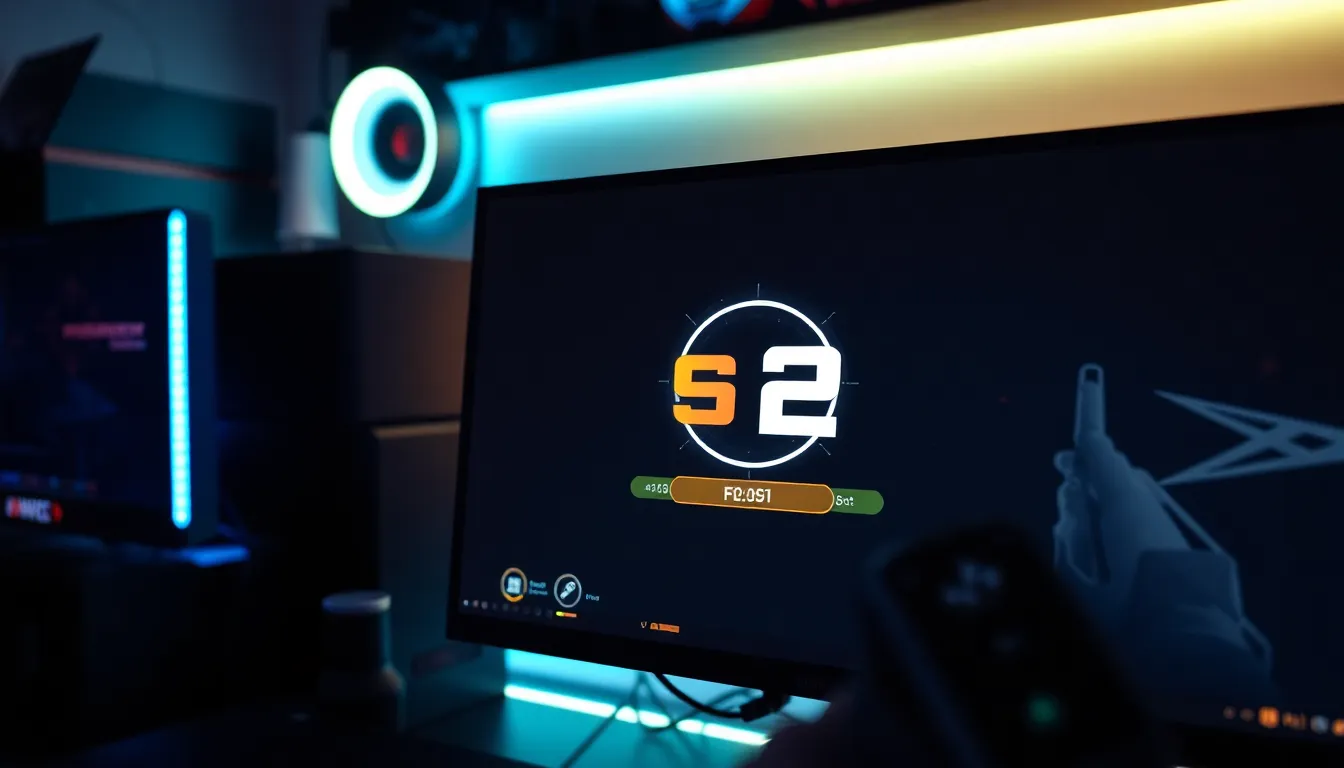In the fast-paced world of CS2, every millisecond counts. Gamers know that monitoring frames per second (FPS) can mean the difference between a glorious victory and a facepalm-worthy defeat. But why settle for guessing when you can easily flaunt those numbers on-screen? It’s like having a personal cheerleader reminding you just how smooth your game really is.
Table of Contents
ToggleUnderstanding CS2 Show FPS
Monitoring frames per second (FPS) significantly enhances gameplay in CS2. Displaying FPS helps players gauge performance and make necessary adjustments in real-time.
What is FPS?
FPS stands for frames per second, a measurement of how many frames a game can render in one second. A higher FPS signifies smoother motion and improved visuals, crucial for competitive gaming. FPS directly affects responsiveness and player experience, influencing how actions translate on-screen. Often, FPS values range from 30 to over 144, depending on hardware capability. Players can quickly notice differences between lower and higher FPS rates.
Importance of Monitoring FPS in CS2
Monitoring FPS in CS2 provides critical insights into game performance. Players can identify lag or stuttering that may hinder their effectiveness. Keeping a consistent FPS above 60 ensures smoother gameplay and reduces input delay. High FPS equates to clear visuals, allowing players to spot enemies more effectively. Additionally, understanding FPS trends can lead to better in-game decisions and strategies. Adjusting graphical settings based on FPS readings optimizes performance tailored to individual systems.
How to Enable CS2 Show FPS


Enabling the FPS display in CS2 helps monitor performance crucial for gamers. Here’s how to do it effectively.
Step-by-Step Guide for Enabling
- Open the game and navigate to the settings menu.
- Locate the “Game” section within the settings.
- Find the option labeled “Enable Developer Console” and switch it on.
- Press the tilde key (
~) to open the console. - Type
cl_showfps 1and hit Enter. This command activates the FPS counter on-screen.
This straightforward process ensures real-time FPS monitoring, fostering improved gaming performance.
In-Game Settings to Check
Checking specific in-game settings optimizes FPS functionality. Confirm that the graphics settings match hardware capabilities.
- Set the resolution to recommended levels to maintain clarity.
- Adjust texture quality to balance performance and visuals.
- Enable vertical sync to reduce screen tearing, if necessary.
These adjustments enhance overall game fluidity while providing accurate FPS readings during matches.
Interpreting FPS Readings
Interpreting FPS readings provides valuable insights into game performance. Players can quickly assess their gameplay with accurate FPS numbers, allowing them to make necessary adjustments.
Understanding FPS Numbers
FPS numbers directly correlate with game smoothness. Higher FPS indicates fluid movement and improved graphics. Players typically aim for a minimum of 60 FPS for optimal experiences. Observing FPS below this threshold may signal potential issues. For competitive scenarios, maintaining FPS between 144 and 240 enhances responsiveness in fast-paced environments. Understanding these numbers helps players optimize settings and expect performance impacts.
Common FPS Issues in CS2
Several common FPS issues can disrupt the gameplay experience in CS2. Lag often arises from low network performance, causing delays in actions. Stuttering might occur when FPS drops unexpectedly, resulting in choppy visuals. GPU limitations can restrict FPS numbers, particularly in demanding scenes. Players may experience FPS fluctuations due to background applications consuming resources. Adjusting graphical settings, closing unused applications, and maintaining system performance can mitigate these problems. Identifying these issues ensures smoother gameplay and better competition outcomes.
Tips to Improve FPS
Improving frames per second (FPS) significantly enhances gaming performance. Various strategies empower players to achieve smoother gameplay in CS2.
Hardware Upgrades
Upgrading hardware often yields substantial performance improvements. A powerful graphics card can elevate FPS levels and provide visually immersive experiences. Increasing RAM helps with multitasking during intense gameplay situations, preventing lag. Solid-state drives (SSDs) enhance load times compared to traditional hard drives, enabling quicker in-game access. Players looking for top-tier performance may invest in a high refresh rate monitor, as it synchronizes flawlessly with FPS for a sharper image. Prioritizing these hardware enhancements optimizes efficiency in gameplay.
Optimizing Game Settings
Fine-tuning in-game settings plays a crucial role in balancing performance and visuals. Lowering resolution or adjusting texture quality can significantly improve FPS. Disabling or reducing anti-aliasing helps achieve a cleaner frame rate under demanding graphics conditions. Every available optimization option within the settings menu contributes to enhanced in-game performance. Enabling features like vertical sync, when useful, can eliminate screen tearing, improving visual continuity. Committing to these adjustments typically results in a smoother and more enjoyable gaming experience.
Monitoring FPS in CS2 is vital for any competitive player aiming for peak performance. By keeping an eye on frame rates players can quickly identify and address performance issues that could hinder their gameplay. The ability to display FPS on-screen empowers gamers to make real-time adjustments that enhance their experience.
Taking the time to optimize settings and invest in hardware upgrades can lead to significant improvements in gameplay fluidity. With a target of at least 60 FPS and ideally higher for competitive play players can enjoy smoother motion and better visuals. Ultimately these practices not only elevate individual performance but also contribute to a more engaging and competitive gaming environment.





